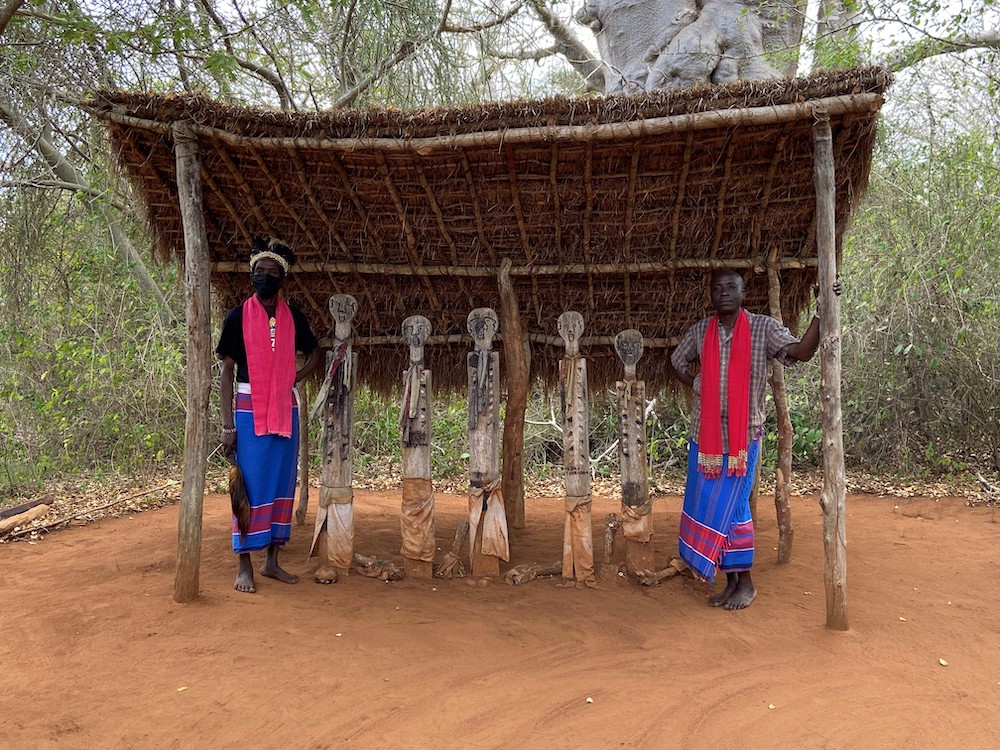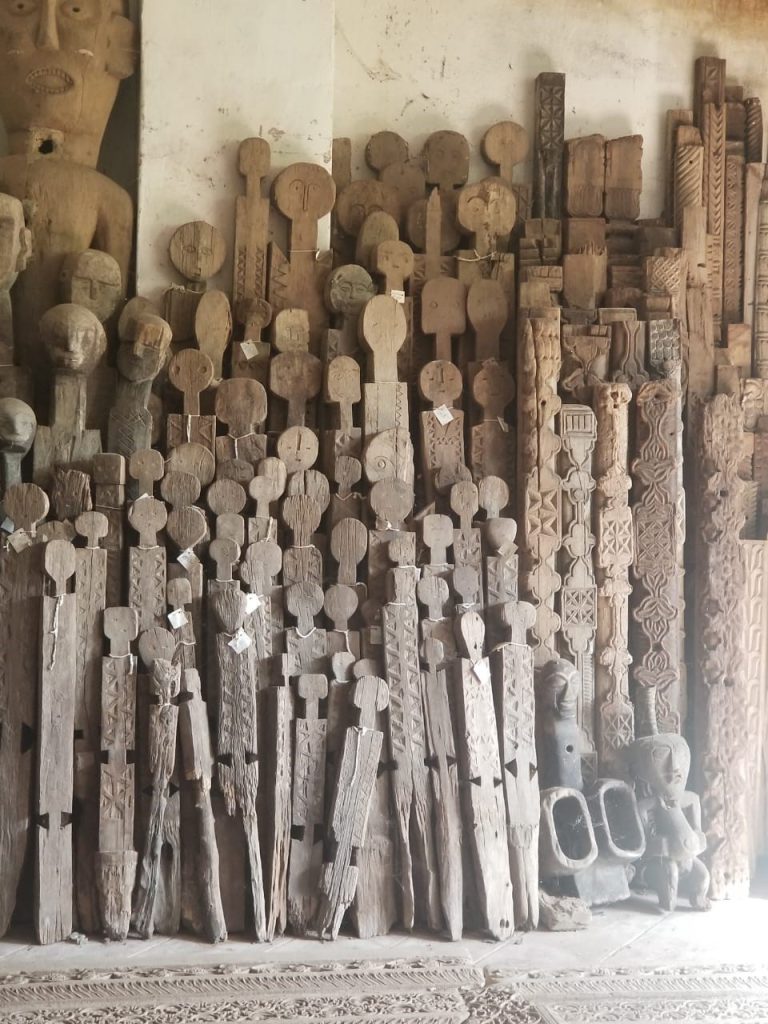Do Stolen Sacred Objects Experience Culture Shock?
Early on the gray, dreary, morning of September 23, I landed at the Dulles International Airport in Washington, D.C., after a 36-hour journey from Kilifi, on Kenya’s coast. As usual, I felt something of a culture shock coming back to the blatantly consumeristic culture of the United States—I felt a little out of place, a little off-kilter, in this world of gluttonous food and endless shopping.
Do ancestral spirits, I wondered, feel culture shock too?
Over the last decade, I have worked to repatriate from U.S. museums ancestral grave posts, or vigango (singular: kikango), to the Mijikenda tribes on the Kenya coast northeast of Mombasa. The Mijikenda carve and erect vigango to honor esteemed members of their society after they die. Vigango are not “art.” The Mijikenda believe vigango to be the embodiment of each dead person’s soul.
Sadly, local thieves and international art dealers established a vast network to steal and sell hundreds, if not thousands, of vigango from the 1970s through the 1990s. Well-meaning but often ill-informed Americans then donated hundreds of vigango to museums like the Denver Museum of Nature & Science (DMNS), where I work. As the meaning and purpose of the vigango have become clearer, and the discussion about museum ethics has evolved, curators and staff, including me, have started to work hard to return such objects to their owners and proper homes.
This particular visit to Kenya, though, brought me something of a shock and a new way of looking at things.
On this trip, I traveled with freelance photographers who are working on a story for a major media outlet. Along with Jimbi Katana, a retired archaeologist and Mijikenda himself, we toured the region and photographed vigango in a variety of contexts—at the Fort Jesus Museum in Mombasa, in a steel cage erected in 2007 to protect two repatriated vigango from being stolen again, and in villages and homesteads where vigango have recently been erected. (Much to my surprise, the practice of kikango carving is still alive, if not necessarily well. Many Mijikenda are justifiably worried that their new vigango, and thus their ancestors, will simply get stolen if erected.)
One day, we photographed a collection of more than 50 vigango belonging to a well-known European artist and collector in a coastal city not far from the Mijikenda homeland. After a tour of the hotel complex from which he earns a living and displays his own works of art, the older man opened a locked garage, and there they were—dozens of vigango leaned up against the wall with hundreds of pieces of art.
I felt as if I had entered a morgue. Indeed, I felt sick to my stomach.
I found it hard to accept that, after all the documented harm that has occurred to the Mijikenda from the theft of their ancestors, there was still such a collection within a 50-mile radius of the Mijikenda homelands. Curiously, our Mijikenda colleague Katana seemed to feel it less, but he has known about the collection for some time now. Perhaps it has become something of an unpleasant fact for the Mijikenda to know that some vigango are in private collections like these.
This particular collector clearly believes he is doing the right thing by physically preserving the vigango, even in a locked shed. He said he feared these vigango might be destroyed if not protected by him. There is a long colonialist tradition of believing that the collection of objects by Western museums is nothing but good for science, culture, history, and humanity; that’s an old way of thinking that’s thankfully changing.
Learn more about the repatriation of vigango, from the archive: A Curator’s Search for Justice.
For me, it was striking how the vigango in his collection were totally out of their cultural context. I could argue that the vigango in Denver were well cared for, professionally catalogued and conserved. But vigango are supposed to decay out on the landscape, like totem poles in the Northwest Coast. They are supposed to be home, with their relatives.
My initial feelings of shock and judgment over this particular collection were self-righteous; on reflection, I could see the hypocrisy. The vigango at DMNS had been 6,000 miles away from home in a very different cultural context before we repatriated them.
I felt as if I had entered a morgue. Indeed, I felt sick to my stomach.
Which vigango experienced more culture shock: those in Denver or those in the private collection in Kenya?
Returning vigango—whether from the United States or from closer to home—is more complicated than it may first seem, not just because of the tens of thousands of dollars it can cost for proper care in shipping. Vigango are not supposed to move once erected. The Mijikenda know all too well that moving a dedicated vigango causes harm to family, homestead, and community. Crops fail. People and animals get sick. Social structures and mores unravel.
So, many Mijikenda elders do not want repatriated vigango back in their villages because the violations these sacred objects have suffered are so great. The vigango are now powerful in all the wrong ways, and the elders do not have ceremonies with which to bring them back into their sacred forests and communities.
The National Museums of Kenya, the Kilifi County government, the Mijikenda elders, and others are trying to design and raise money for an outdoor center near their homeland in which to display repatriated vigango in a safe, respectful, and acceptable way. I hope all vigango eventually find their way back to such safe spaces—including the ones stacked up in that garage.
Vigango are liminal objects—they exist in the transitional space between spiritual and physical worlds, connecting ancestors and their descendants across space and through time. In a way, airplanes are liminal vessels as well, creating a sense of disorientation through the quick passage from one world into another. The vigango’s journey is meant to be spiritual and temporal; it is not supposed to be physical or geographic.
The journey I took home mirrors exactly the journey forced on the vigango when stolen three decades ago: from homesteads near Kilifi to Mombasa, then Nairobi, and on to the United States. I made my journey of my own free will and still experienced culture shock. The vigango had no such choice. They were stolen, ripped from their cultural context, packed and shipped, displayed, and sold to the highest bidder—their cultural and liminal state torn asunder.
Culture shock is real and may be a useful way to help explain what the vigango, and thus the Mijikenda, have experienced over the last several decades—and continue to experience today. After the original vigango theft, what was once familiar and easy for the Mijikenda has become unfamiliar, difficult, and even existentially threatening.
Sometimes, the way home isn’t simple, it’s shocking.



































